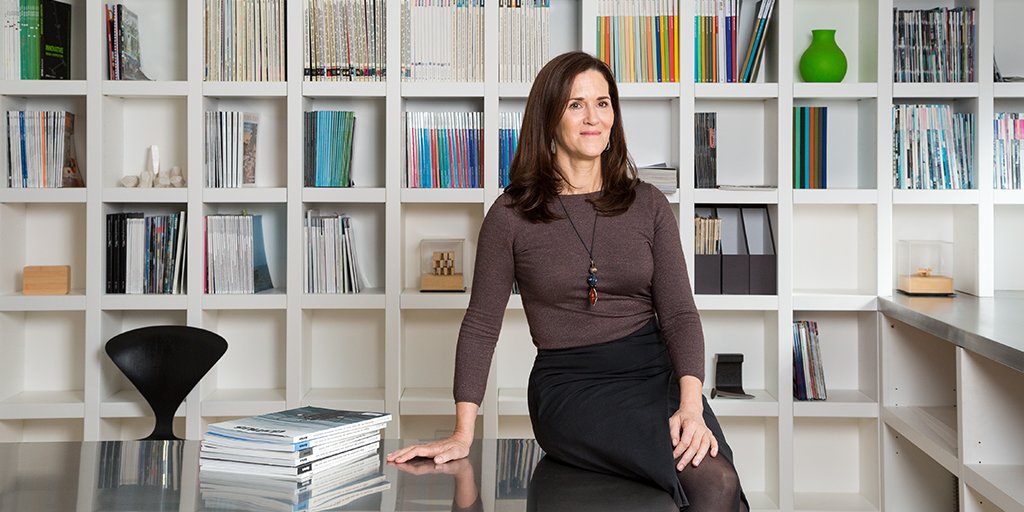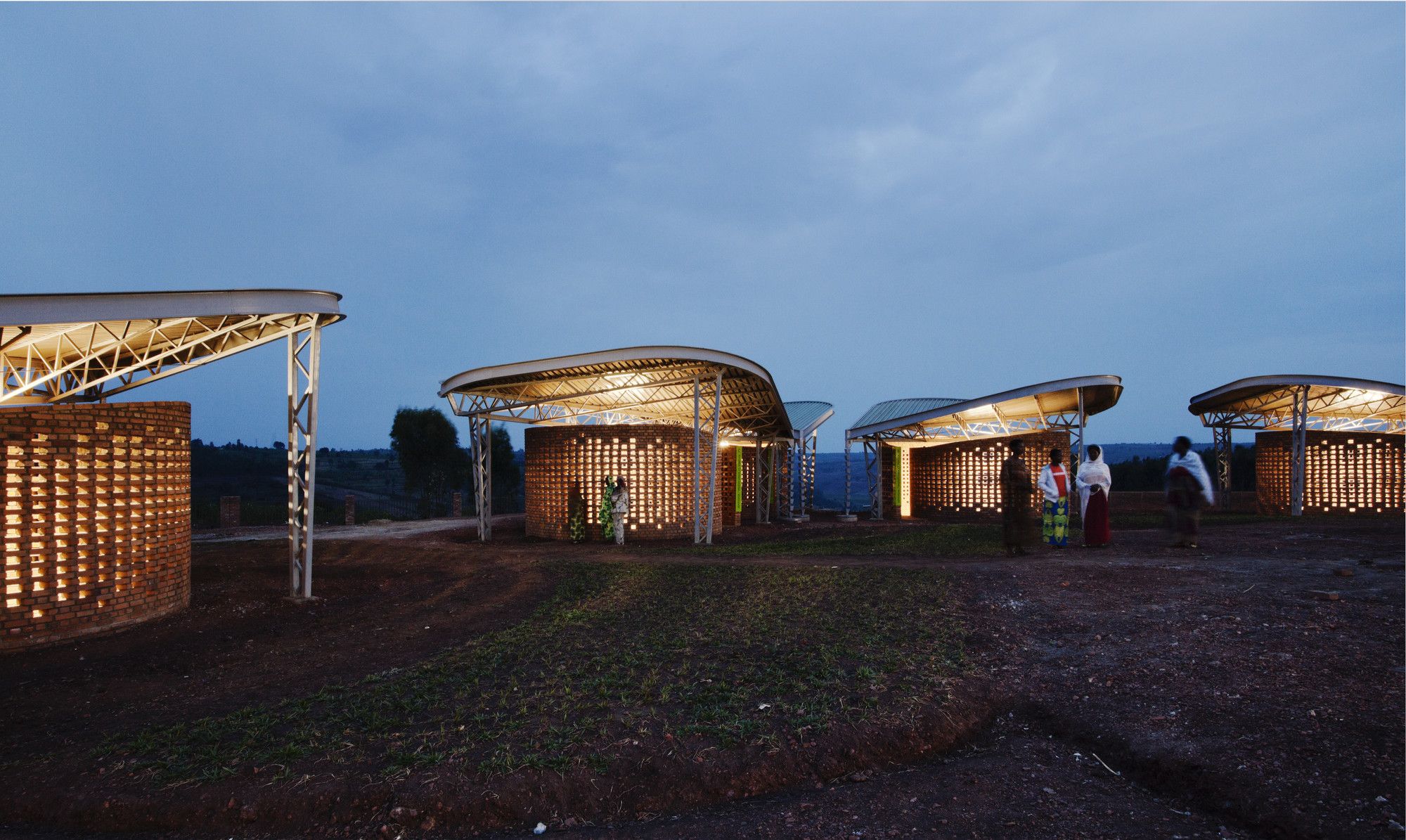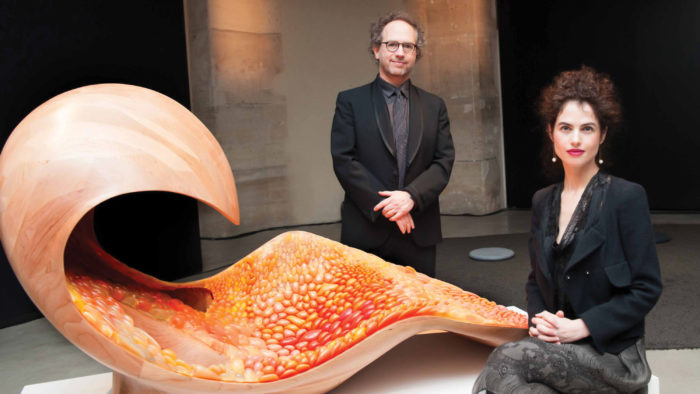For a century and a half, women have been proving their passion and talent for design and architecture in a male-dominated profession – some female architects’ contributions have shaped the history of architecture. It is a paradox that even in the 21st century, architecture can still be a challenging career path for women, and gender inequality continues to be a cause of concern.
However, there are women in architecture careers who are challenging the profession’s boys’ club every day and have made a profound impact on architecture as we know it today.
Who Is The Most Famous Female Architect?
Dame Zaha Hadid is, without a doubt, the most famous female architect. Her commitment, innovation, and bold persona made her the first woman to win the Pritzker Prize in 2004. Zaha Hadid’s works and achievements inspired women in the architecture and design fields to pursue their passion.
- Date of Birth: 31st October 1950
- Region of Birth: Baghdad, Iraq
- Date of Death: 31st March 2016
- Famous Architectural Work: Riverside Museum, Glasgow, Guangzhou Opera House, and Generali Tower
Also Read: 10 Unpredictable Facts You Never Knew About Zaha Hadid
A Glance at Some Remarkable Women in Architecture:
A list of 10 successful female architects is short, and many important names may be left out, but you should know ten notable women in architecture:
1) Lina Bo Bardi
- Date of Birth: 5th December 1914
- Region of Birth: Rome, Italy
- Date of Death: 20th March 1992
- Famous Architectural Work: Bardi’s Bowl
Dona Lina dedicated her work to a mission: to explore design’s social possibilities and promote a new way of collective life. She searched for solid design concepts and relied on a simple formal vocabulary, but with parallel expressive use of materials that highlighted her sensibility.
For her, architecture should be considered “not as built work, but as possible means to be and to face different situations.” In April 1989, at age 74, the architect was honored with the first exhibition of her work from the same university that denied her a permanent teaching position 30 years earlier: Universidade de São Paolo.
One of her most emblematic buildings is the SESC Pompeia, realized in 1982 in Sao Paolo, Brazil. It is a converted factory with three massive concrete towers featuring aerial walkways and asymmetrical portholes in the place of windows. With its radical design and the almost brutal approach of the industrial cell, Bo Bardi brought to life her vision for the world, what she called a “socialist experiment.”
2) Maya Lin
- Date of Birth: October 5, 1959
- Region of Birth: Athens, Ohio, United States
- Famous Architectural Work: The Last Memorial, Women’s Table, and the Caspian Sea
Maya Lin is an architect, sculptor, and land artist. With nearly 30 years of practice, she has completed a series of projects, including large-scale art installations, residential and institutional architecture, and memorials. Her work is focused on nature and sustainability, followed by minimal design and her goal of making a place for individuals within the landscape.
She draws inspiration for her sculpture and architecture from culturally diverse sources, including Japanese gardens, Hopewell Indian earthen mounds, and works by American earthworks artists of the 60s and 70s.
At age 21, she became the youngest architect and the first woman to design a memorial on the National Mall. Vietnam Veterans Memorial is a two-acre plot framed by a wall, displaying the names of all the American soldiers lost in conflict.
Her design was considered controversial and insulting, “a black scar,” as a Vietnam veteran described it, and after many delays, it was finally built in 1982. Today it is recognized as the definition of a modern approach to war, with its minimal, unsentimental, and clear-eyed concept.
3) Odile Decq
- Date o18th July: July 18, 1955
- Region of Birth: Laval, France
- Famous Architectural Work: Cargo incubator, Paris and Fangshan Tangshan National Geopark Museum, China
Odile Decq is a French architect, and academic awarded the 2016 Jane Drew Prize for being “a creative powerhouse, spirited breaker of rules, and advocate for equality.” She is the director of the Paris firm “Studio Odile Decq,” with projects from art galleries and museums to social housing and infrastructure.
As she is often called, the French Goth made a radical entrance to the scenery of architecture, introducing a new high-tech language spiced up with the deep red color she uses in most of her buildings.
Her project Phantom Restaurant in Paris is a study of colliding temporalities. With red and white biomorphic forms, she experiments with surfaces that bend and undulate. A red carpet dramatically flows down the main staircase’s steps, running under the tables until it arrives at the edge of the glass facade. The concept of this design was to create a temporary removable space that respects the existing monument, the Opera Garnier.
4) Amale Andraos
- Date o11th March March 11, 1973
- Region of Birth: Beirut, Lebanon
- Famous Architectural Work: New Holland Island Master Plan, Miami Museum Garage, and US Davis ManettiShrem Museum
Amale Andraos is Dean of Columbia University’s Graduate School of Architecture, Planning, and Preservation (GSAPP) and co-founder of WORKac, a New York-based architectural and urban practice with international reach. WORKac is focused on re-imagining architecture at the urban, rural, and natural intersections.
Embracing reinvention and collaboration with other fields, they imagine alternate scenarios for the future of cities. Andraos is committed to research and publications. Her work has recently explored the question of representation by re-examining the concept of the ‘Arab City.’
In the project Smart School, the WORKac explores the possibility of a unique community dedicated to a new concept of education by intertwining landscape and program. The park generates food for the community and recycles its waste. As the children’s relationship with learning changes, their relationship with the landscape also changes. The project creates diverse experiences, combining architecture and landscape, public and private spaces focusing on a sustainable energy strategy.
5) Momoyo Kaijima
- Date of Birth: 1969
- Region of Birth: Tokyo, Japan
- Famous Architectural Work: Mado Building, Canal Swimmer’s Club
Momoyo Kaijima co-founded the Tokyo-based architecture office Atelier Bow-Wow, one of Japan’s leading firms. The firm is well known for its domestic and cultural architecture and its research exploring the urban conditions of micro, ad hoc architecture.
With her partner Yoshiharu Tsukamoto, they have been experimenting with design theories that introduce a new vocabulary to urban studies and new concepts for public space, such as architectural behavior logs and micro-public space. Their projects range from houses to public and commercial buildings and public artworks in Japan, Europe, and the USA.
Split Machiya is a private house they created in Tokyo for a couple and a single woman, composed of two mirrored structures connected with a central courtyard. The aesthetics of the Machiya, a traditional Japanese building type from the Edo period, influenced them. They used their minimal approach to creating a fully functioning house in minimal space.
6) Sharon Davis
- Date of Birth: N/A
- Region of Birth: N/A
- Famous Architectural Work: Women’s Opportunity Center
Founder and principal of Sharon Davis Design, she is an award-winning practitioner whose work is driven by her belief in the transformative power of design. She believes that the success of the designs is measured by the degree to which they expand access to the fundamental human right to social justice, economic empowerment, and a healthy, sustainable environment. Her vision of architecture is buildings that can alter the future of communities.
Her philosophy on social design came to life with her project Women’s Opportunity Center in Rwanda. The purpose was to create a forward-thinking educational and community center in Kayonza to train and educate local women through farming. The main idea was to use the form of a vernacular Rwandan village as the organizing principle: a series of human-scaled pavilions clustered to create security and community for up to 300 women. The project also includes a demonstration farm that helps women produce and market their goods.
7) Neri Oxman
- Date of Birth: February 6, 1976
- Region of Birth: Haifa, Israel
- Famous Architectural Work: Silk Pavilion (2013), Wanderers (2015), Material Ecology (2020)
Neri Oxman is an American-Israeli designer, architect, artist, and founder of the Mediated Matter group at MIT’s Media Lab. Her work embodies environmental design and digital morphogenesis, with shapes and properties determined by their context.
She coined the phrase “material ecology” to define her work, applying biology and computer science findings to architecture using 3D printing and fabrication techniques. Oxman sees the world and environment as organisms, changing regularly and responding to use; that’s why she is inspired chiefly by natural shapes and textures.
In her project Silk Pavillion, she explores ways of overcoming the existing limitations of additive manufacturing at architectural scales. She used a robotic arm to imitate how a silkworm deposits silk to build its cocoon, creating 26 silk panels that formed a dome suspended from the ceiling.
8) Shahira Fahmy
- Date of Birth: 1974
- Region of Birth: Cairo, Egypt
- Famous Architectural Work: The new campus for the American University in Cairo (2005) and the Ahmed Bahaa El-Din Cultural Center (2010)
Fahmy is an architect who strives to balance new spatial concepts and existing context: culture, tradition, and urban morphology. The Cairo-based architect is leading the way for Egyptian architecture by demonstrating that architectural design can and should elevate the public realm with a holistic approach that combines contextual analysis, playful experimentation, and an ethos of social responsibility.
Block 36 is a block of residential apartments inspired by the patterns and forms of urbanized agricultural plots. Security and the separation between public and private areas are essentially social and cultural issues considered for the layout of gates and boundaries.
9) Amanda Levete
- Date of Birth: November 17, 1955
- Region of Birth: Bridgend, United Kingdom
- Famous Architectural Work: Selfridges Building, Birmingham Lord’s Media Centre, and Albert Museum MAAT
Amanda Levete is a RIBA Stirling Prize-winning architect, founder, and principal of AL_A, an international award-winning design and architecture studio. AL_A’s approach to design balances the intuitive with the strategic and incorporates restless research, innovation, collaboration, and attention to detail.
The studio constantly explores the application of new materials and techniques in architecture and design. It thrives for new ways to create a significant and positive impact beyond the building, community, and city context.
The EDP Foundation’s Museum of Art, Architecture & Technology in Lisbon explores the convergence of architecture, technology, and contemporary art as a field of cultural practice. It is a building for the people of Lisbon, cultural visitors, and tourists that defy the distinction between public space and building. The building is reimagined as a landscape for encounters between people, visitors, ideas, and between the city and its citizens.
10) Kazuyo Sejima
- Date of Birth: October 29, 1956
- Region of Birth: Hitachi, Ibaraki, Japan
- Famous Architectural Work: Platform I Vacation House, Platform II Studio, Castelbajac Sports Store, and Saishunkan Seiyaku Women’s Dormitory
Sejima, a partner in the architecture practice SANAA, is known for designs with clean modernist elements such as slick, clean, and shiny surfaces made of glass, marble, and metals. She is concerned with exploring the cognitive possibilities of architecture, how the built work can impact how we know our world and ourselves, and the processes by which knowledge and understanding are acquired through experience. She also develops a particular interest in exploring the relationship between the inside and outside.
In her design for the New Museum of Contemporary Art, she uses a pretty minimal scheme: a series of stacked cubes in an offset arrangement that gives the building dynamicity and an attractive shape, being different but similar to the nearby constructions.













































